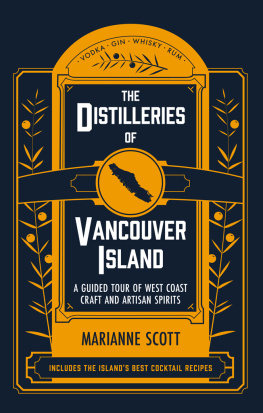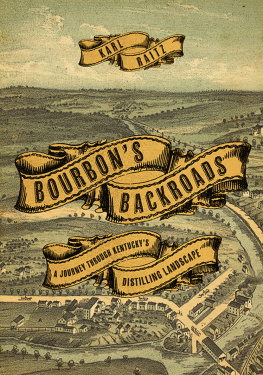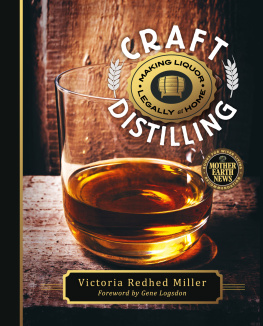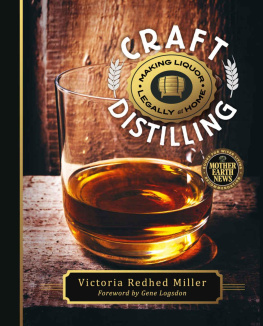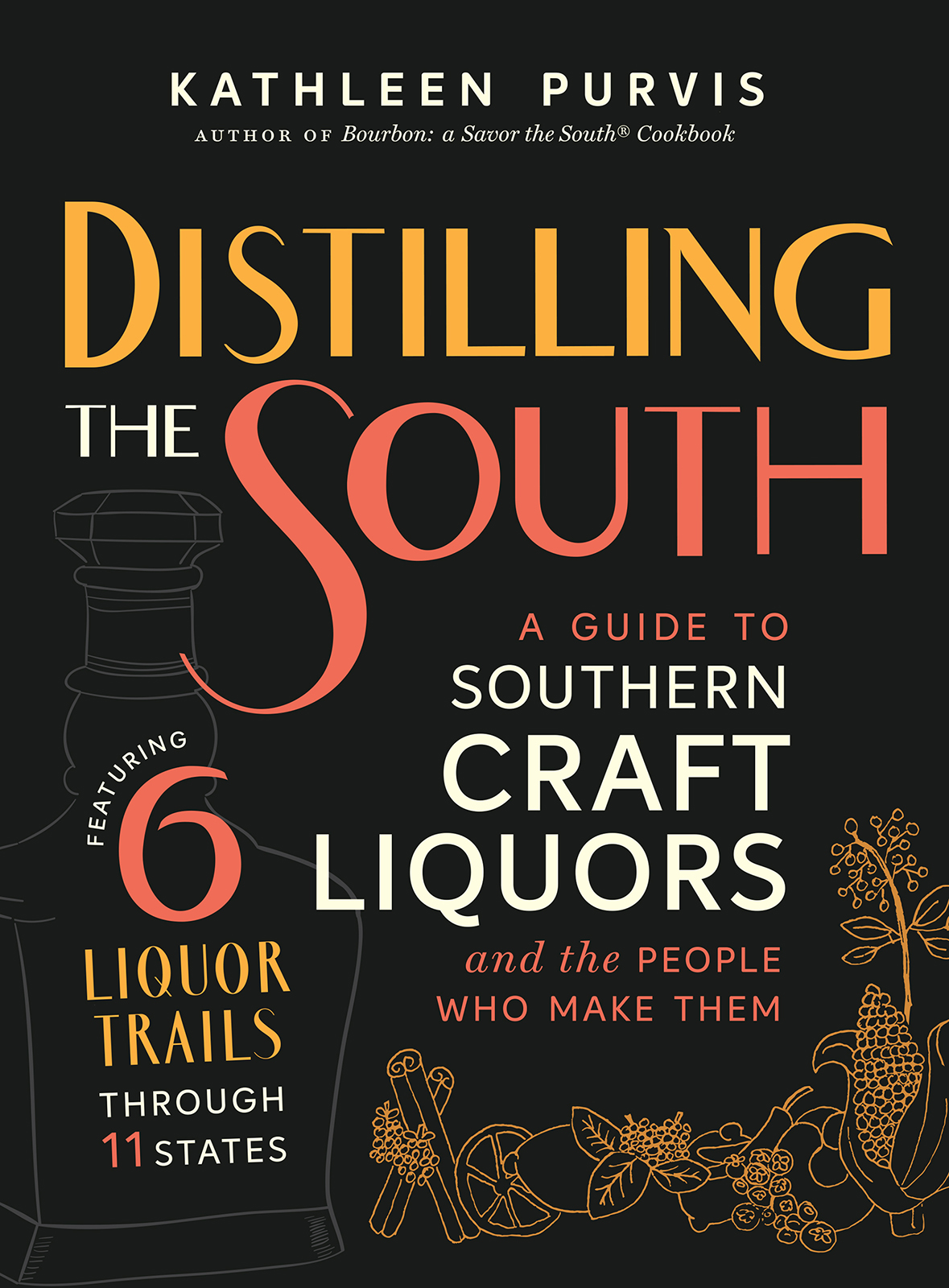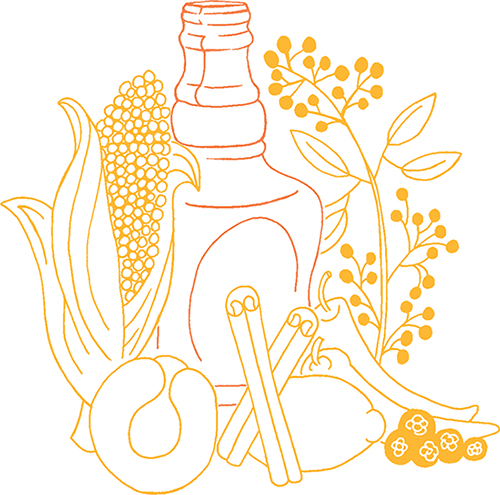This book was published with the assistance of the Luther H. Hodges Sr. and Luther H. Hodges Jr. Fund of the University of North Carolina Press.
Set in Miller and Intelo by Tseng Information Systems, Inc.
The University of North Carolina Press has been a member of the Green Press Initiative since 2003.
Cover illustrations: corn and other liquor ingredients by Sally Fry Scruggs; whiskey bottle by Roman Poljak/stock.adobe.com.
All interior photographs by the author.
Names: Purvis, Kathleen, author.
Title: Distilling the South : a guide to Southern craft liquors and the people who make them / Kathleen Purvis.
Description: Chapel Hill : The University of North Carolina Press, [2018] | Includes index.
Identifiers: LCCN 2017044543| ISBN 9781469640617 (cloth : alk. paper) | ISBN 9781469640624 (ebook)
Subjects: LCSH: MicrodistilleriesSouthern States. | DistillersSouthern States. | Distilling industriesSouthern States. | LiquorsSouthern States.
Classification: LCC HD9390.S672 P87 2018 | DDC 338.4/7663500975dc23 LC record available at https://lccn.loc.gov/2017044543
Introduction
There I was, standing in a lemon grove, surrounded by trees taller than my head, each one lush with green leaves.
I wasnt in Sicily or Southern California. This lemon grove was in a long greenhouse on a steep hillside in northern West Virginia, in the small arm of the state that curls over the top of Virginia just below Maryland. Its a place that gets an average of twenty-one inches of snow a year, and where the January temperatures usually hover around 20 degreesnot the place youd expect to find trees with fruit we associate with heat and sunshine.
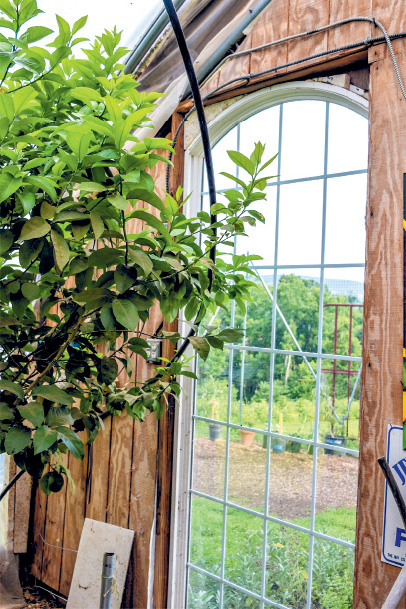
The lemon grove on the hill: from a window in one end of the greenhouse at Bloomery Plantation, you can look out over the Blue Ridge Mountains.
It seems improbable, and if I hadnt seen it for myself, I wouldnt have believed it. The lemons from those trees were destined to be zested by hand, their skins giving up their flavor to make skinny bottles of Italian-style limoncello right there in West Virginia.
I stood at the window in one end of the greenhouse, looking out at steep hills of the Blue Ridge Mountains stretching off in the distance late on a summer afternoon, and marveled at that view, that greenhouse, and what it represents.
Why would someone go to so much trouble to create an Italian-style lemon cordial in what is surely the most unlikely spot on Earth?
I found the lemon grove on the grounds of a rustic farm called Bloomery Plantation in the countryside outside tiny Charles Town in West Virginia, one of the southern states where changing laws and a new mania for craft food have allowed the flourishing of an entirely new business. Well, a very old business, actually, but one thats coming alive in a whole new way.
Tom Kiefer and Linda Losey, the owners of Bloomery Plantation, have a story that is different and yet familiar all over the craft-spirits business today: on a trip to Italy to attend the canonization of Kiefers great-great-aunt, they bought a bottle of limoncello and became entranced by the vivid flavor.
Returning to America, they tried to find another bottle, but were disappointed by everything they tried. In America, most commercial limoncello is made with lemons that are zested by machine, including too much bitter pith and altering the flavor.
So they found land in West Virginia on the site of what had once been an old ironworks, and opened a farm-based distillery, where they could grow some of their own lemons and create the kind of limoncello they wanted to drink.
We love an adventure, Losey says. Thats how we approach life, as an adventure. This hadnt been done, so we thought, Why not?
Eventually, they went on to add a long row of SweetShine cordials, all based on the moonshine thats been made in the South for generations and flavored with ingredients, some grown on the property, that include pumpkin, raspberries, and Hawaiian ginger. Their black walnut liqueur won best nut cordial in the world at the San Francisco World Spirits Competition in 2015. You can go to the farm and visit their tasting bar in a rustic log cabin dating to 1840.
This is the allure of the craft distilling industry, where passion, heritage, and a desire to express yourself through the creation of spirits are driving a new generation of distillers to make everything from gin and vodka to whiskeys, rums, and brandies, even filling barrels and waiting years to make bourbon, all challenging themselves with a simple aim: if they dream it, they can make it. And you can be a part of it. With this book in hand as your guide, youll get a unique way to tour the South through the experience of craft liquor.
What drives these new distillers? Thats what I set out to discover.
SEE FOR YOURSELF
Visiting distilleries will take you on an unusual journey around the South, getting you off the main roads and back into small towns, farms, and historic areas.
Youll witness a new wave of American entrepreneurialism, small but growing fast, where people are staking their lives, careers, and bank accounts to challenge big-name brands that have become household names, behemoths like Jim Beam and Jack Daniels.
Youll come away knowing a lot more about what you drink and how its made. And youll meet passionate people along the way, from young distillers who are trying to go back to the days when distilleries were a part of every town to people who have been driven by love of a drink to put their own mark on it.
Youll hear about the exploding interest in making liquors that are totally locally sourced as well, boosting state farming systems by using corn and grains grown within a few miles or reaching back to old varieties of rye and corn that havent been used in more than a generation.
Because they use smaller amounts, many craft distilleries are pinning their claims on grain to glass or, in a favorite phrase I heard a lot, farm to flask. Non-GMO corn strains and organically grown fruits are all finding their way into production, often with help from state universities that are pairing with whiskey programs to train distillers and find better agriculture practices. Almost every distiller I met had also teamed with local farms that use the spent grains to feed local pigs and cattle, so the movement is flask to farm as well.
Youll also meet people like yourself on tours. The people drawn to visit American distilleries come from all over the world, all age groups from millennial to baby boomers, and from all walks of life. Some of the most interesting people Ive met on my tours are fellow visitors, people drawn to exploring the world through the lens of food. Ive seen families in groups, from young adults to grandparents, and batches of friends out to share an experience. Ive seen day-trippers and weekenders, bridal showers and bachelor parties, even people on their first dates. At one stop, I shared the tour with two couples from Belgium pushing a baby in a stroller, out to experience a different view of America. Their questions were delightful and enlightening.


